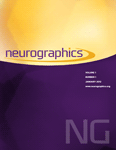
Imaging of Low Back Pain in Adolescents and Young Adults: Looking Beyond the Usual Suspects
Low back pain is one of the most common causes of primary care visits in the United States and can begin early in life. When imaging is performed, MRI is the diagnostic test of choice after radiographs, but MRI findings can be subtle, and CT may also play a diagnostic role. This article
reviews clinical and imaging findings of some less common causes of low back pain in young people: ring apophysis fractures; stress fractures of the pars interarticularis, pedicle, and sacrum; atypical Scheuermann disease; and nonradiographic axial spondyloarthritis. The most difficult of
these entities to detect on MRI is the fracture of the ring apophysis, which mimics disc herniation. MRI detection of stress fractures is improved using spoiled gradient-echo thin-slice 3D T1 volumetric interpolated breath-hold examination and 2D Dixon techniques. Atypical Scheuermann disease
can be distinguished from compression fractures, infection, and spondyloepiphyseal dysplasia tarda by the presence of undulating endplates without erosions and the absence of platyspondyly. Fat-suppressed fluid-sensitive axial MRI images are helpful in the detection of nonradiographic axial
spondyloarthritis.
Learning Objective: To identify less common etiologies of low back pain that may present in adolescents and young adults using various radiologic modalities and techniques.
Learning Objective: To identify less common etiologies of low back pain that may present in adolescents and young adults using various radiologic modalities and techniques.
Keywords: FS = fat-suppressed; LAVA = liver acquisition with volume acceleration; SD = Scheuermann disease; VIBE = volumetric interpolated brain examination
Document Type: Research Article
Publication date: 01 January 2025
- Access Key
- Free content
- Partial Free content
- New content
- Open access content
- Partial Open access content
- Subscribed content
- Partial Subscribed content
- Free trial content